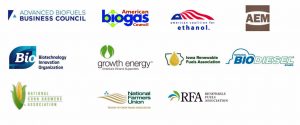Pointing to EPA actions and rumors of actions in recent weeks to reduce volume obligations and lower demand for ethanol, Commonwealth Agri-Energy general manager Mick Henderson said Pruitt apparently “has not gotten the memo from the White House that the RFS is to be protected and allowed to grow the market for biofuels, while providing consumers with more choice and savings at the pump.”
Henderson was just re-elected as chairman of the RFA this week during the organization’s annual meeting in Des Moines. Henderson’s ethanol plant, located in Hopkinsville, Ky., produces 35 million gallons of ethanol per year from 12 million bushels of corn. Henderson has been with Commonwealth Agri-Energy since 2003 and has served on the RFA Board of Directors since 2006.
RFA also elected Neil Koehler of Pacific Ethanol as Vice Chairman, and Charles Wilson of Trenton Agri-Products as Treasurer.










